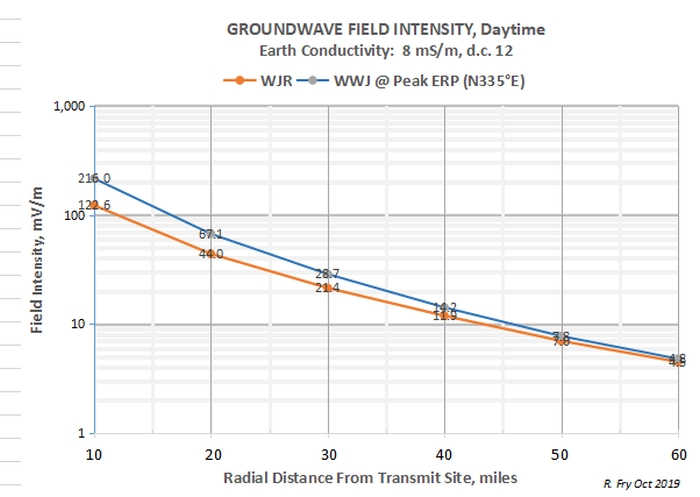CK-722 wrote: ↑Thu Oct 24, 2019 7:21 pmERP always depends on the reference efficiency for 1 kW @ 1 km. ...Another reference is 314 mV/m for a theoretical lossless 1/4 wavelength. ...
The FCC convention is to define the efficiency of an antenna system used by AM broadcast stations to be the e-field intensity it produces 1 km away from it along a radial in the horizontal plane when 1 kW of r-f power is applied across its input terminals.
However this is not the "classical" way of stating efficiency — which is the ratio of the power (energy) at the output of a device compared to its input: Efficiency = Power(out) / Power(in).
There is a single, mathematical relationship between the power radiated by an antenna system in a given direction and the e-field intensity that it will produce for the physical conditions of the propagation path.
The term "ERP" is referenced to
power in watts,
not the e-field intensity of an e-m wave in V/m.
As noted by CK-722, a perfect, 1/4-wavelength, series-fed, unloaded vertical monopole driven against a perfect ground plane produces an e-field intensity of about 314 mV/m at 1 km when 1 kW of r-f power flows between its feedpoint terminals. Such an antenna system radiates 100% of that 1 kW of r-f input power (e.g., 1 kW).
The daytime array of WWJ produces its maximum far-field gain toward a compass bearing of N353°E in the horizontal plane, as a result of the directional pattern it radiates. The result of that gain may be expressed either in units of field intensity (V/m) at 1 km for the applied r-f power, or in units of the radiated power (watts) required to generate that field.
These two values are uniquely co-dependent. Neither of them requires any external reference other than the S.I. unit definitions for volts and watts.

